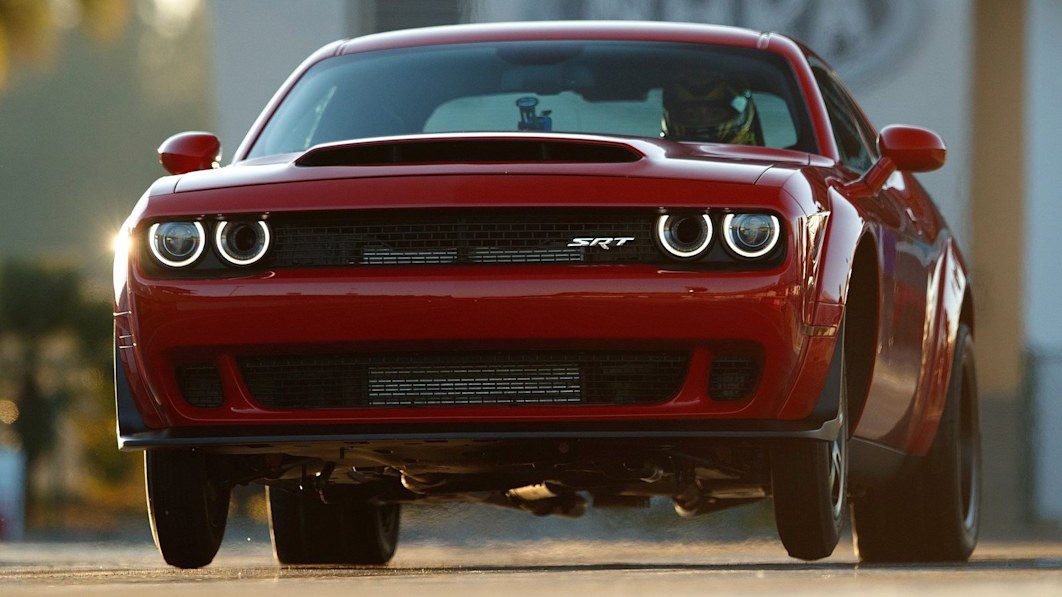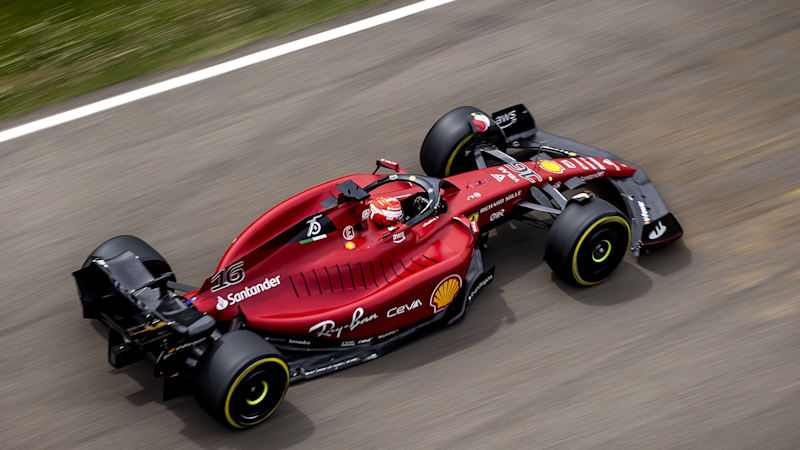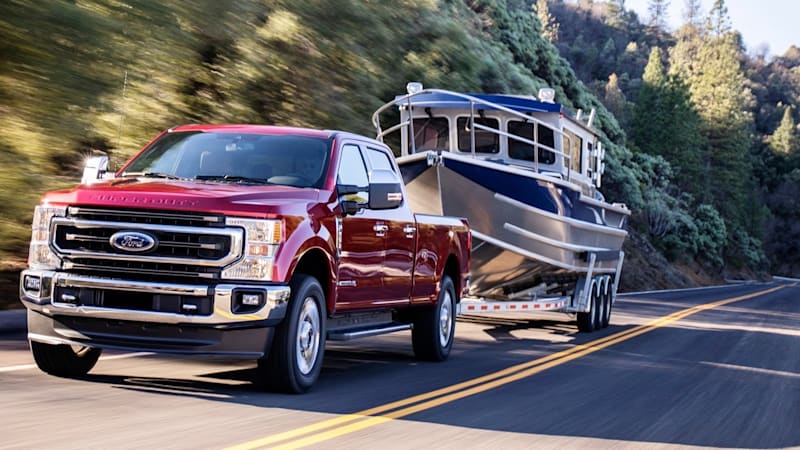What is torque? (And while we're at it, what is horsepower?)

You may have heard it before: “Horsepower sells cars; torque wins races.” But what is torque and why does it matter? We’re not engineers here, even when we play them on YouTube, so we’re going to give you the non-engineer explanation and do our best not to make you feel like a photography major in a gen-ed math class. Let’s dive in.
Torque
Torque is how you get things done, mechanically speaking. Turning a knob, opening a valve, working a lever — these are everyday applications of the concept. In essence, it’s a measurement of the amount of work being done by something. Or, put a bit more plainly (and unscientifically), it’s a measure of leverage.
Your typical physics teacher will probably demonstrate the concept with some sort of simple lever, but this is Autoblog, not West Crestfield Senior High, so let’s use car stuff, shall we? The best way to easily visualize torque is not with engine components, but with a lug wrench.
Why a lug wrench? Because torque is a multiplicative measurement of an amount of force being delivered over a given distance. That’s why automotive engine torque is expressed in pound-feet; you’re applying a force (in pounds) over a distance (in feet).
Read more: Why do so many cars have 2.0-liter turbo engines? A closer look
Scenario: You’ve pulled off into a parking lot with a flat tire. You’ve got a properly inflated spare, a jack and a typical lug wrench. For the purposes of this example, let’s say that lug wrench’s handle is one foot (12”) long. You line up the jack at the proper point and you’re ready to loosen those lug nuts before you put the wheel in the air. You stick the lug wrench on and give it a good, assertive yank counter-clockwise … and nothing happens.
What do you do? Go ahead, shout out the answer if you know it. If you said “get a longer lug wrench,” you’re correct. “Yank harder” would have also been correct, because increasing either the distance (length of the wrench handle) or force (yanking harder) would increase the amount of torque you were applying to that lug nut.
But you can only yank so hard, and the more you try, the more fatigued you will become. You can replace yourself with a larger, more forceful human (diesels are torquey; try Vin) or you can get a better tool. But there are no lug wrench stores around (what, you don’t have lug wrench stores?), just a one-window hardware store, a liquor joint and a couple hair and nail salons. So, you wander into the hardware store and ask the clerk if they carry lug wrenches.
They don’t. Just your luck! But since you now understand how torque works, you know that all you need is something that will make your lug wrench handle longer, like a piece of pipe that will fit over the grip. So you buy a 4-foot length of metal pipe, walk outside, and twist those suckers right off, because now you’re applying four times the force you were with that one-foot wrench handle.
Horsepower
Now that you understand torque, understanding the difference between it and horsepower is much easier. The beauty of torque is that’s a very simple “can it be done?” formula. You need to move something that requires X force and you have Y foot-pounds of leverage to apply. If Y is greater than or equal to X, you can move it. So why do we care about horsepower?
Read more: How do today’s new vehicles match their EPA MPG ratings?
Horsepower is a more complex measurement because it accounts for time, referred to mathematically as rate. In other words, if torque tells you whether you can do something at all, horsepower tells you how quickly you can get it done. To calculate it, you multiply torque (in pound-feet) by speed (in RPM, in the case of a car) and divide the total by 5,252. Why 5,252? Because it’s a mathematical constant, as in “why are you constantly asking us questions we don’t feel like answering?”
Let’s go back to that flat tire scenario. Let’s say that hardware store was fresh out of anything you could use to make the lug wrench longer and Vin Diesel has ghosted your Insta chat. So while you can’t make yourself stronger, you may be able to find ways to increase the force you’re applying to the end of the wrench. Like, say, using a hammer.
With that hammer, you can apply more force to the end of the wrench handle, but you’re not going to just use it to help you yank, right? You’re going to hit the thing. Each of these momentary bursts of force is greater than the constant amount you can apply to the handle by yanking on it, and sure enough, each impact starts to loosen the lug nut.
Read more: Most powerful SUVs in America for 2022
Bang. Bang. Bang. Eventually, it’s loose enough that you can use the wrench (and eventually your fingers) to do the rest. No, you didn’t apply as much torque as you would have using a longer wrench, so it took a little longer. The rate at which you accomplished the work decreased, but you eventually got it done. This is the same basic premise behind a handheld impact gun. You’re delivering quick, powerful bursts of torque over and over again to incrementally apply leverage.


So, yes, if you had a large enough impact gun, you could use it to turn the crankshaft on your car and move it down the road, but even a hypothetical monster impact gun isn’t going to be able to move a many-thousand-pound vehicle down the road very quickly. It has the leverage (torque) to get it going, in other words, but not very quickly (horsepower).
Fundamentally, this is how an internal combustion engine works, only you have multiple wrenches (your connecting rods) applying torque to your nut (the crankshaft) hundreds of times per second. And to take that analogy further, the crankshaft in turn (sorry) becomes a giant wrench that you’re using to turn your flywheel.
Read more: What is a CVT?
This is the point where an engine’s torque output is actually measured. Every part of your powertrain downstream of the crankshaft is just another wrench turning yet another component, and using this analogy, your transmission is basically a box of differently sized wrenches, allowing you to choose the best one for the job you’re trying to perform. Wrenches. Wrenches everywhere.
So which is better?
There’s a saying in racing: to finish first, you must first finish. Torque, represented by the big red Ford pickup truck up above in this article, is the “can it be done?” figure, so it stands to reason that it’s the most critical measurement of an engine’s potential. But if you’re in a race, represented by the little red Ferrari F1 car up there, whether wheel-to-wheel or against the clock, “how quickly?” is an incredibly relevant question. Neither torque nor horsepower tells the whole story. Look no further than the Jeep Wrangler Rubicon 392 for a perfect illustration of the fact that there are numerous factors at play, such as tire choice, aerodynamics, suspension design, and (arguably most critically) gearing. But that’s a topic for another time.
Related video:







